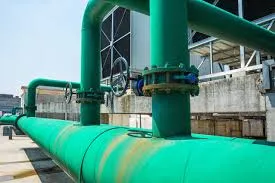
-
 Afrikaans
Afrikaans -
 Albanian
Albanian -
 Amharic
Amharic -
 Arabic
Arabic -
 Armenian
Armenian -
 Azerbaijani
Azerbaijani -
 Basque
Basque -
 Belarusian
Belarusian -
 Bengali
Bengali -
 Bosnian
Bosnian -
 Bulgarian
Bulgarian -
 Catalan
Catalan -
 Cebuano
Cebuano -
 China
China -
 China (Taiwan)
China (Taiwan) -
 Corsican
Corsican -
 Croatian
Croatian -
 Czech
Czech -
 Danish
Danish -
 Dutch
Dutch -
 English
English -
 Esperanto
Esperanto -
 Estonian
Estonian -
 Finnish
Finnish -
 French
French -
 Frisian
Frisian -
 Galician
Galician -
 Georgian
Georgian -
 German
German -
 Greek
Greek -
 Gujarati
Gujarati -
 Haitian Creole
Haitian Creole -
 hausa
hausa -
 hawaiian
hawaiian -
 Hebrew
Hebrew -
 Hindi
Hindi -
 Miao
Miao -
 Hungarian
Hungarian -
 Icelandic
Icelandic -
 igbo
igbo -
 Indonesian
Indonesian -
 irish
irish -
 Italian
Italian -
 Japanese
Japanese -
 Javanese
Javanese -
 Kannada
Kannada -
 kazakh
kazakh -
 Khmer
Khmer -
 Rwandese
Rwandese -
 Korean
Korean -
 Kurdish
Kurdish -
 Kyrgyz
Kyrgyz -
 Lao
Lao -
 Latin
Latin -
 Latvian
Latvian -
 Lithuanian
Lithuanian -
 Luxembourgish
Luxembourgish -
 Macedonian
Macedonian -
 Malgashi
Malgashi -
 Malay
Malay -
 Malayalam
Malayalam -
 Maltese
Maltese -
 Maori
Maori -
 Marathi
Marathi -
 Mongolian
Mongolian -
 Myanmar
Myanmar -
 Nepali
Nepali -
 Norwegian
Norwegian -
 Norwegian
Norwegian -
 Occitan
Occitan -
 Pashto
Pashto -
 Persian
Persian -
 Polish
Polish -
 Portuguese
Portuguese -
 Punjabi
Punjabi -
 Romanian
Romanian -
 Russian
Russian -
 Samoan
Samoan -
 Scottish Gaelic
Scottish Gaelic -
 Serbian
Serbian -
 Sesotho
Sesotho -
 Shona
Shona -
 Sindhi
Sindhi -
 Sinhala
Sinhala -
 Slovak
Slovak -
 Slovenian
Slovenian -
 Somali
Somali -
 Spanish
Spanish -
 Sundanese
Sundanese -
 Swahili
Swahili -
 Swedish
Swedish -
 Tagalog
Tagalog -
 Tajik
Tajik -
 Tamil
Tamil -
 Tatar
Tatar -
 Telugu
Telugu -
 Thai
Thai -
 Turkish
Turkish -
 Turkmen
Turkmen -
 Ukrainian
Ukrainian -
 Urdu
Urdu -
 Uighur
Uighur -
 Uzbek
Uzbek -
 Vietnamese
Vietnamese -
 Welsh
Welsh -
 Bantu
Bantu -
 Yiddish
Yiddish -
 Yoruba
Yoruba -
 Zulu
Zulu
Strategies for Enhancing Efficiency in FRP Laundering Processes
Exploring Efficient Methods for Streamlining FRP Laundering Processes
In the ever-evolving landscape of manufacturing and production, organizations are under constant pressure to optimize their processes, reduce costs, and improve efficiency. One area that has received increasing attention is the laundering of Fiber Reinforced Plastic (FRP) materials. With the growing demand for sustainable practices and the need to ensure compliance with environmental regulations, it is essential to explore efficient methods for streamlining FRP laundering processes. This article discusses several strategies that can be adopted to enhance efficiency in FRP laundering while ensuring quality and sustainability.
Understanding FRP Laundering
FRP is widely used in various industries due to its lightweight nature, high strength, and corrosion resistance. However, the laundering process of FRP involves the removal of contaminants and ensuring the surface is appropriately prepared for any subsequent applications or treatments. This process can be resource-intensive, requiring significant water, energy, and chemical inputs, which can lead to environmental concerns and increased operational costs.
1. Process Optimization and Automation
One of the most effective ways to streamline FRP laundering is through process optimization. By evaluating the existing laundering protocols, manufacturers can identify bottlenecks and inefficiencies. Implementing automation technologies, such as conveyor systems and robotic arms, can significantly reduce manual labor, minimize errors, and increase throughput. Automated washing systems with programmable settings for temperature, pressure, and duration can also enhance the consistency and effectiveness of the laundering process.
2. Water and Chemical Recycling
To address the sustainability challenges associated with FRP laundering, organizations should invest in water and chemical recycling systems. By treating and reusing water in the laundering process, companies can drastically reduce their water consumption and waste discharge. Moreover, advancements in chemical recovery technologies can enable the successful reclamation of solvents and detergents used in the cleaning process, further minimizing environmental impact and operational costs.
exploring efficient methods for streamlining frp laundering ...

3. Eco-Friendly Cleaning Agents
The choice of cleaning agents plays a crucial role in the laundering process. Transitioning to eco-friendly, biodegradable cleaning agents can not only enhance the environmental profile of the laundering operations but also reduce the risks associated with hazardous chemicals. Engaging with suppliers who specialize in sustainable cleaning products ensures that the environmental and health impacts are minimized while maintaining the effectiveness required for FRP cleaning.
4. Employee Training and Engagement
Efficient laundering processes rely not only on technology but also on the expertise of the personnel involved. Regular training programs focused on best practices and innovative laundering techniques can empower employees to perform their roles more effectively. Engaging employees in the continuous improvement process can lead to valuable insights and foster a culture of efficiency and responsibility within the organization.
5. Data-Driven Insights and Monitoring
Adopting data-driven techniques for monitoring FRP laundering processes can uncover vital insights into operational efficiency. Implementing IoT devices and sensors can provide real-time data on water usage, energy consumption, and washing performance. By analyzing this data, organizations can make informed decisions to refine their processes continually, enabling them to adapt quickly to changing circumstances or demands.
Conclusion
Streamlining FRP laundering processes is critical for meeting industry standards, reducing costs, and promoting sustainability. By embracing automation, recycling, eco-friendly cleaning agents, employee training, and data analytics, organizations can enhance the efficiency of their laundering operations. As manufacturers work towards achieving operational excellence, these methods not only offer immediate improvements but also contribute significantly to the long-term viability and environmental stewardship of the industry. The future of FRP laundering lies in continuous innovation and a commitment to sustainable practices, ensuring that organizations can thrive in a competitive marketplace while minimizing their ecological footprint.









